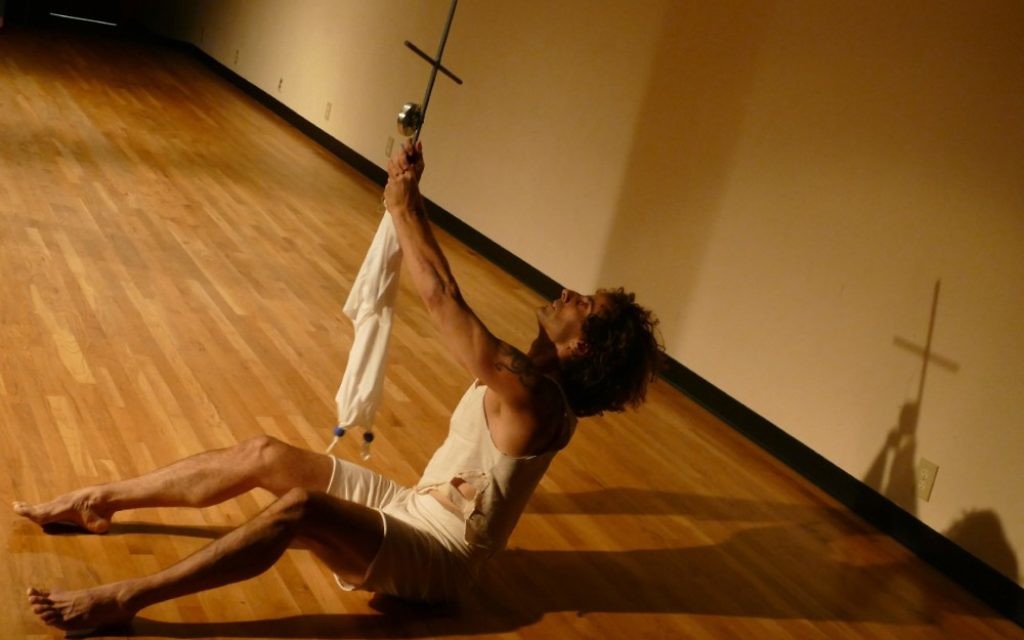Exposed Opens Eyes on Opening Night
Two experimental dance performances Wednesday night, Oct. 5, launched a cultural experiment in metro Atlanta: a six-week festival of Israeli modern dance and performance art in shows, workshops and classes spread across three universities and multiple stages.
“These next six weeks are really transformational for the city,” Kennesaw State University dance program director Ivan Pulinkala said at the opening night of Exposed at Decatur Square’s CORE theater.
CORE’s artistic director, Sue Schroeder, is the director of the Exposed festival, which she has pulled together with the Israeli Consulate General and its cultural affairs director, Yonit Stern, as well as 7 Stages, Emory University’s dance program, Kennesaw State’s dance and theater programs, and Georgia State University’s Rialto Center for the Arts.
Get The AJT Newsletter by email and never miss our top stories Free Sign Up
In addition to being a high-tech and military power, Israel is a world leader in modern dance, and Schroeder said the idea to make that artistic talent accessible to as much of the metro area as possible was born three years ago when she met Stern and was invited to visit Israel on an artistic exposure tour.
Stern, who attended opening night with the consul general, Ambassador Judith Varnai Shorer, and deputy consul general, Anat Fisher-Tsin, played a key role in inspiring and connecting the Atlanta and Israeli talent. Pulinkala said Stern introduced him to Israel four years ago, and he has since visited six times.
“Sue Schroeder, she’s really the unsung hero tonight,” he said. “This really is an amazing feat to bring all these incredible artists from Israel.”
Those artists are the key, Schroeder said. “This festival is artist-driven, where the artists make choices.”
The logistics, especially arranging visas for the artists, were daunting, but Schroeder anticipates that the lasting impact on the Atlanta cultural scene will be more than worth the effort.
She’s right if the response of the audience to the first two pieces at the packed CORE theater was any indication.
The first piece, “You Make (Me) Sense,” featured Ella Ben-Aharon, who is an artist in residence at Kennesaw State this semester, playing with light and dark while executing her own choreography.
She distributed tiny lights to audience members seated in a circle, then allowed those lights to provide most of the illumination as she moved around the room. Sometimes she was face to face with a member of the crowd; sometimes she was moving in unexpected ways in the middle.
She wound up exchanging places with one seated audience member in the interactive performance.
Ben-Aharon said improvisation played an important part in the piece. She decided where to go and what to do in response to the reactions she saw in the faces around her.
Rather than confine herself to a traditional eight-beat movement, Ben-Aharon said, her choreography reflected the body’s natural internal rhythms.

The second performance, the world premiere of “2.0,” externalized the soul through the use of a puppet.
“One of the most difficult things about this piece is learning to manipulate the puppet so that it has life and then it doesn’t have life, so it has both extremes,” said Ido Tadmor, who performed Pulinkala’s choreography.
It’s a piece in development. Tadmor said Pulinkala worked with him for six days on tour in Amsterdam six months ago, then they returned to the work a week before the premiere.
“You’re going to see the piece as it’s being born in the same way that the puppet is being born,” Tadmor said.
“We started with the idea of the puppet being a representation of the person’s soul,” Pulinkala said. “Sometimes it’s outside the body; sometimes it’s inside.”
Tadmor uses the Kabbalistic prayer Ana B’Koach as a mantra with the puppet for much of the piece, emphasizing the idea of connecting the performance to G-d and the spiritual world, while moving much of the time as a living puppet would.
 “I’m not a young dancer anymore. I’m going to be 53 soon,” Tadmor said. “I couldn’t see myself dancing with the puppet just like a kid. … We found a way to overcome this idea of a dancer with a puppet.”
“I’m not a young dancer anymore. I’m going to be 53 soon,” Tadmor said. “I couldn’t see myself dancing with the puppet just like a kid. … We found a way to overcome this idea of a dancer with a puppet.”
The work is representative of the entire festival as a collaboration between Israel and Atlanta involving a serious conversation about art and exposing the process to the public.
Composer Paul Stevens said his music developed through a continual conversation with Pulinkala over months. Then, three days before the performance, he saw during a dry run that the music didn’t fit one section, so he rewrote it for the premiere.
“An artist should never be completely in love with his own work,” Tadmor said. “He should be open-minded.”






comments